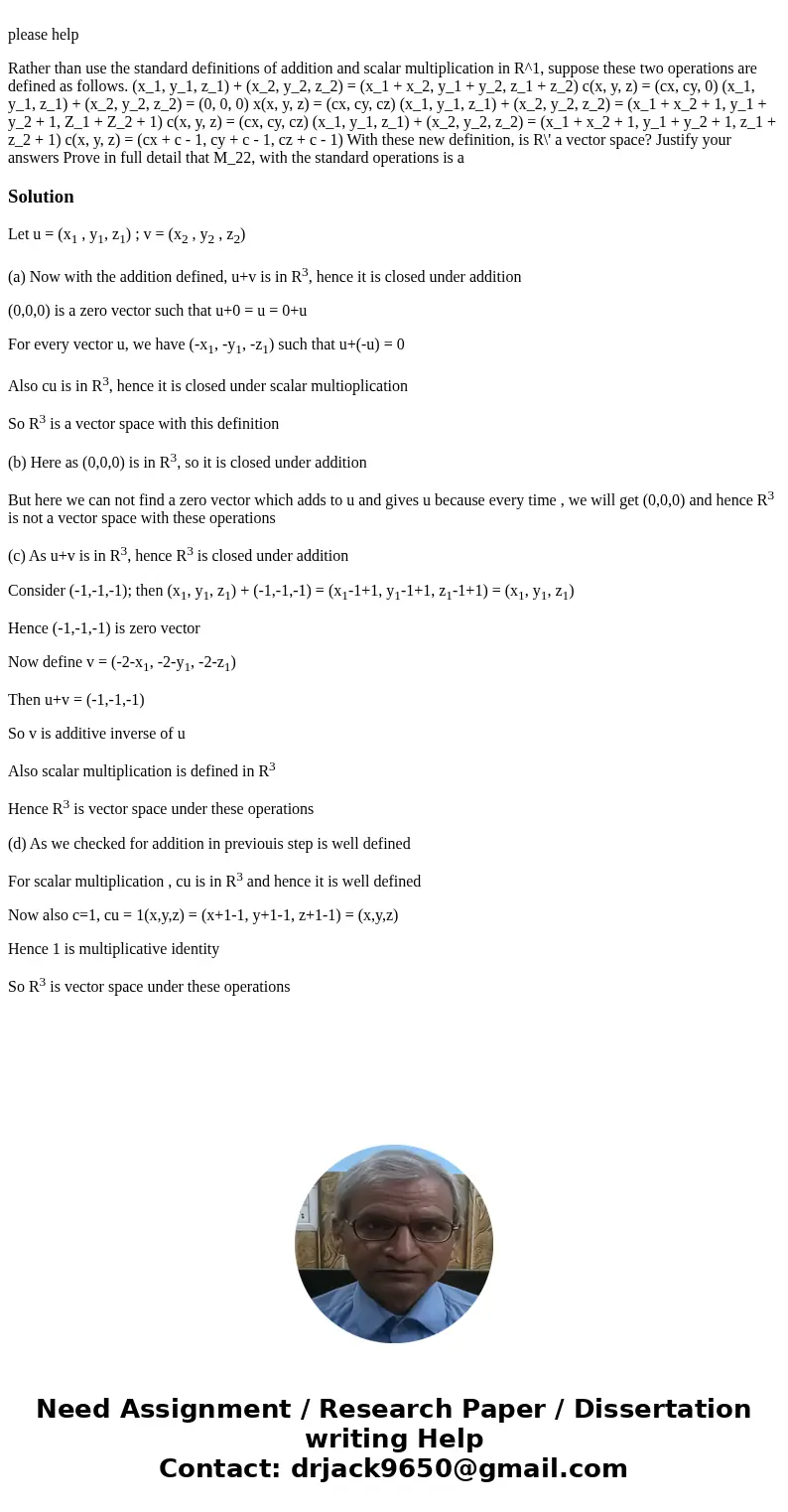please help Rather than use the standard definitions of addi
please help
Solution
Let u = (x1 , y1, z1) ; v = (x2 , y2 , z2)
(a) Now with the addition defined, u+v is in R3, hence it is closed under addition
(0,0,0) is a zero vector such that u+0 = u = 0+u
For every vector u, we have (-x1, -y1, -z1) such that u+(-u) = 0
Also cu is in R3, hence it is closed under scalar multioplication
So R3 is a vector space with this definition
(b) Here as (0,0,0) is in R3, so it is closed under addition
But here we can not find a zero vector which adds to u and gives u because every time , we will get (0,0,0) and hence R3 is not a vector space with these operations
(c) As u+v is in R3, hence R3 is closed under addition
Consider (-1,-1,-1); then (x1, y1, z1) + (-1,-1,-1) = (x1-1+1, y1-1+1, z1-1+1) = (x1, y1, z1)
Hence (-1,-1,-1) is zero vector
Now define v = (-2-x1, -2-y1, -2-z1)
Then u+v = (-1,-1,-1)
So v is additive inverse of u
Also scalar multiplication is defined in R3
Hence R3 is vector space under these operations
(d) As we checked for addition in previouis step is well defined
For scalar multiplication , cu is in R3 and hence it is well defined
Now also c=1, cu = 1(x,y,z) = (x+1-1, y+1-1, z+1-1) = (x,y,z)
Hence 1 is multiplicative identity
So R3 is vector space under these operations

 Homework Sourse
Homework Sourse